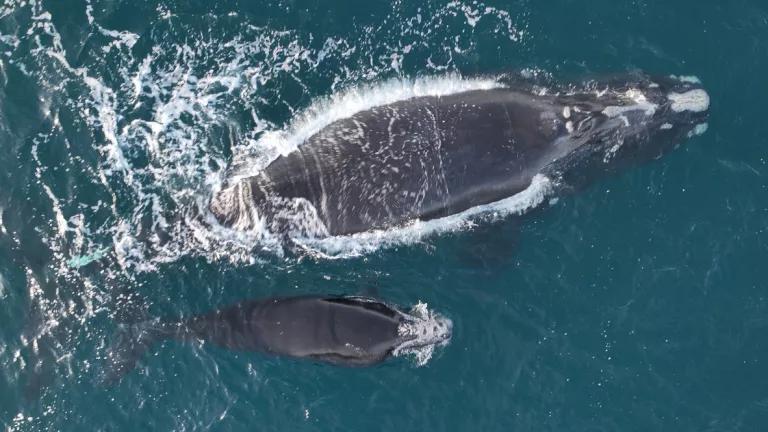Oregon Must Do More to Reduce Entanglements
Help our West Coast marine life and ask the Oregon Fish and Wildlife Commission to require stronger management measures.

NOAA Fisheries
Proposed regulations to reduce the risk of entanglement of whales and sea turtles in the Oregon Dungeness crab fishery are insufficient.
Entanglement in fishing gear is a major threat to threatened and endangered humpback whales, endangered blue whales, and endangered leatherback sea turtles that migrate and feed off the U.S. West Coast. There were 333 confirmed west coast whale entanglements between 2012 and 2022. Most entanglements are never observed so the actual number is likely far higher - researchers estimate as many as 10 times more off the West Coast. Most observed entanglements, where gear is known, occur in Dungeness crab fishing gear.
The Oregon Dungeness crab fishery contributes to the cumulative impacts that West Coast fisheries are having on threatened and endangered whales and sea turtles. In response, the Oregon Department of Fish and Wildlife (ODFW) is developing a Conservation Plan under the Endangered Species Act, and has proposed risk reduction measures that are available now for public review.
But the proposed risk reduction measures are not expected to reduce entanglement risk to the necessary levels. ODFW is proposing to make permanent the temporary risk reduction measures that were in place for the last three seasons (Winter 2020-Spring 2023). However, humpback whale entanglements showed no signs of decline during that period. One humpback whale was confirmed entangled in Oregon Dungeness crab gear in 2021 and two were confirmed in 2022. These entanglements indicate the temporary measures have been ineffective.

Endangered whales are getting entangled at an alarming rate off our West Coast.
E. Lyman/HWS/NOAA
Oregon needs to strengthen its conservation measures and meaningfully reduce entanglement risk.
To immediately reduce risk in 2023/2024, Oregon should:
- Further reduce the number of lines in the water by requiring a 40 percent pot limit reduction, rather than the currently proposed 20 percent reduction. ODFW’s own analysis indicates that a 30 percent reduction would confer 1.5 times the conservation benefit of current requirements.
- Set the depth restriction of the fishery at 28 fathoms to align with the critical habitat boundary for humpback whales designated under the Endangered Species Act. The depth restriction proposed by ODFW is 40 fathoms.
- Implement the risk reduction measures no later than April 15th to reflect the time period when concentrations of whales in Oregon waters are expected to increase. ODFW is proposing a May 1st effective start date even though peak exposure of whales to entanglement risk occurs in April.
- Develop a concrete timeline for gear marking implementation.
- Enable an emergency fishery closure to be designated if a North Pacific right whale or Southern Resident orca are confirmed entangled.
To design the most effective risk reduction measures for the 2024/2025 season and beyond, ODFW should continue to analyze higher pot limit reductions and alternative effective start dates of the seasonal regulations. The Department should also develop additional adaptive management measures and allow pop-up (a.k.a. “ropeless” or “on-demand”) fishing systems in areas otherwise closed to fishing to protect whales.
How you can help:
The Oregon Fish and Wildlife Commission will act on the proposed measures on August 4, 2023. Commission meetings allow for in-person, virtual, and/or written public comments. Send written comments by August 1 to: ODFW.Commission@odfw.oregon.gov.




